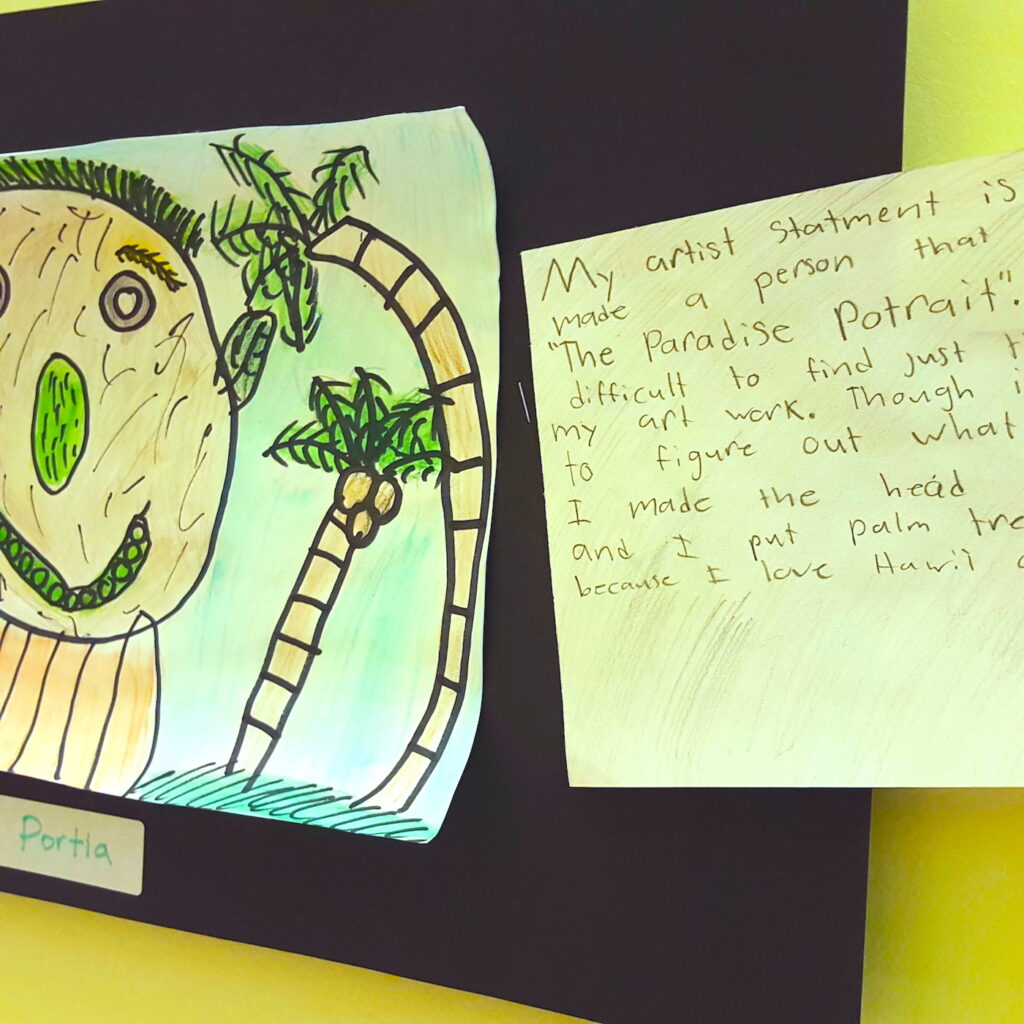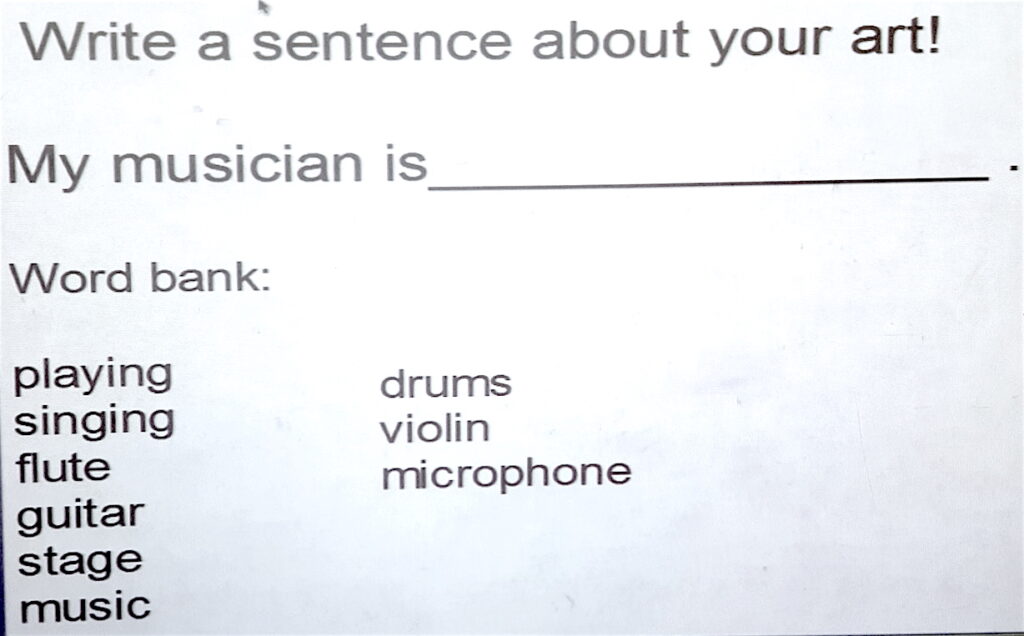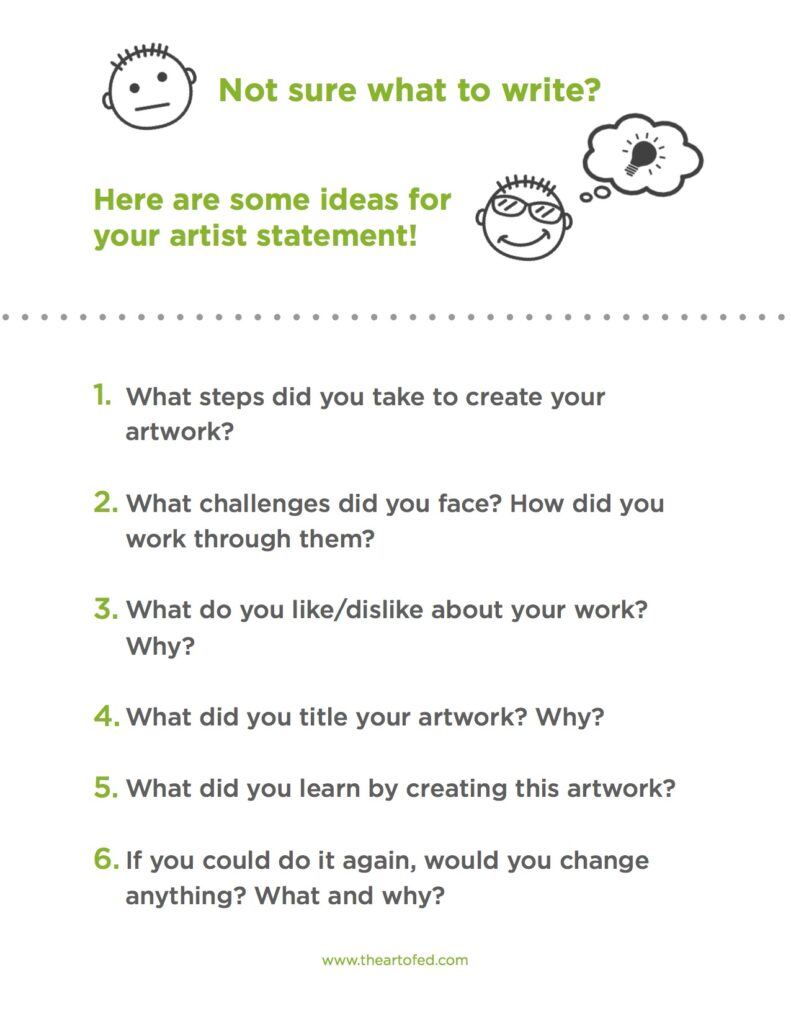As an elementary teacher, do you ever feel pressured to fit everything into short class periods? Seeing my classes for only 40 minutes a week, I used to struggle to fit quality reflection time into my lessons.
Because I teach 600 students each week, written artist statements seemed beyond reach.
There just didn’t seem to be enough time.
Still, I felt nagged by these questions:
- How can I incorporate quality reflection time in my lessons?
- How can I help my students learn to communicate about their artistic choices?
- How can I make sure that my expectations are developmentally appropriate for my students?
I decided that reflection was important and that I had to make time for it in my lessons. I started to work with all of my first through fifth-grade students on writing artist statements. Today I’m sharing what works.
Here are 5 guidelines to help your young students write successful artist statements.

1. At the end of each project, stop the class 10 minutes early to allow time for writing artist statements.
Allowing time for writing can be tricky at first. However, soon it will become part of your process and you and your students will come to expect it.
2. Have students write one sentence per grade level.
In my room, students write at least as many sentences as their grade. For example, my first graders write at least one sentence, and my third graders write at least three. This is a way to assure that expectations match students’ writing abilities.
3. Having sentence stems and word banks available helps.
In first and second grade, I often give my students the first 2 or 3 words for their sentence. It is also helpful to provide a word bank on the board including words students might need. You can see an example below.

4. Have students write in complete sentences.
Students must use complete sentences to tell me something that I cannot see in the artwork. I am looking for something deeper than description. This rule helps their statements be more detailed and clear. This is also a great way to support their writing skills.
5. Provide older students with a list of prompts.
Students can sometimes get frustrated while working on their artist statements. “I just don’t know what to write!” is a common complaint. To help them, I provide this list of prompts to my older students. Each student has a copy glued into the front cover of their sketchbook. That way, they always have a place to look when they are struggling with their writing. You can download a copy to use with your students below.
I include these statements with the artworks in my displays. I have found that teachers and students take more time looking at the artwork in the halls. I often see people looking carefully and reading the statements out loud. Other teachers have told me how much they enjoy reading the statements. Administrators love them as well!
If you’re looking for even more tips for writing artist statements at the elementary level, check out the article The Key to Helping Your Students Talk About Art. And, if you’re looking for information about writing artist statements with older students, be sure to save a copy of this handy flowchart.
Do your students write artist statements?
What tips do you have to make the process easy for you and your students?
Magazine articles and podcasts are opinions of professional education contributors and do not necessarily represent the position of the Art of Education University (AOEU) or its academic offerings. Contributors use terms in the way they are most often talked about in the scope of their educational experiences.






